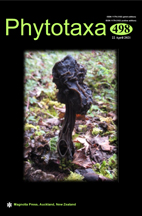Abstract
Recognizing species diversity is challenging in genera that display interspecific similarity and intraspecific variation; hybridization and the evolution of cryptic hybrid species amplifies these challenges. Recent molecular and morphological research focused on the systematics of Spiranthes (Orchidaceae) support hybrid speciation as an important driver of species diversity, particularly within the S. cernua species complex. Working under an integrated history-bound phylogenetic species concept, new molecular and morphometric data provide evidence for a new and rare cryptic hybrid species resulting from the ancient hybridization of S. cernua × S. odorata, here described as S. bightensis. Although S. bightensis is regionally sympatric with S. cernua it does not co-occur with that species, and it is allopatric with respect to S. odorata. Endemic to a narrow region extending from the Delmarva Peninsula to Long Island, New York, this new species occurs in the shadow of the Northeast megalopolis and appears to have undergone a major population decline over the last 200 years. By recognizing this distinct evolutionary lineage as a new species, this research is the first step towards developing conservation protocols for this rare species and highlights the importance of the North American Geologic Coastal Plain for biodiversity conservation and evolution.

